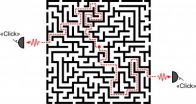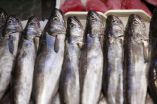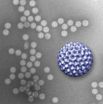(Press-News.org) Athens, Ga. – New research from the University of Georgia identifies the mechanisms responsible for regenerating blood vessels in the brain.
Looking for ways to improve outcomes for stroke patients, researchers led by the UGA College of Pharmacy assistant dean for clinical programs Susan Fagan used candesartan, a commonly prescribed medication for lowering blood pressure, to identify specific growth factors in the brain responsible for recovery after a stroke.
The results were published online Dec. 4 in the Journal of Pharmacology and Experimental Therapeutics.
Although candesartan has been shown to protect the brain after a stroke, its use is generally avoided because lowering a person's blood pressure quickly after a stroke can cause problems—like decreasing much-needed oxygen to the brain—during the critical period of time following a stroke.
"The really unique thing we found is that candesartan can increase the secretion of brain derived neurotrophic factor, and the effect is separate from the blood pressure lowering effect," said study coauthor Ahmed Alhusban, who is a doctoral candidate in the College of Pharmacy. "This will support a new area for treatments of stroke and other brain injury."
Alhusban and Fagan worked with Anna Kozak, a research scientist in the college, and Adviye Ergul, a professor and director of the physiology graduate program at Georgia Health Sciences University. They are the first to show that the positive effects of candesartan on brain blood vessel growth are caused by brain derived neurotrophic factor, or BDNF.
The research shows that when candesartan blocks the angiotensin II type 1 receptor, which lowers blood pressure, it stimulates the AT2 receptor and increases the secretion of BDNF, which encourages brain repair through the growth of new blood vessels.
"BDNF is a key player in learning and memory," said Fagan, the Albert W. Jowdy Professor. "A reduction of BDNF in the brain has been associated with Alzheimer's disease and depression, so increasing this growth factor with a common medication is exciting."
AT2 is a brain receptor responsible for angiogenesis, or the growth of new blood vessels from pre-existing vessels. Angiogenesis is a normal and vital process in human growth and development—as well as in healing.
For the study, the investigators used both living rat models and human brain cells. Groups were treated with either a low or high dose of angiotensin II alone or in combination with a dose of candesartan. Candesartan promoted angiogenesis, but this effect was entirely prevented by blocking BDNF or inactivating the AT2 receptor. This method identified the involvement of the AT2 receptor in BDNF secretion.
"This target is a key to enhance recovery and reduce the subsequent disability in stroke victims," said Alhusban. "We know angiogenesis proteins are upregulated in the week after a brain injury. Stimulation of the AT2 receptor with a medication is likely to enhance this part of the brain's own recovery mechanisms."
Medications proven to kick-start BDNF will not only benefit stroke victims but could have a role in other brain injury, particularly veterans with combat-related traumatic brain injuries.
There are currently medications in development activating the AT2 receptor as a mechanism for brain protection, but drug development will take five to 10 years before such a therapy is available to the public.
###
The research was funded by grants from the National Institutes of Health's National Institute of Neurological Disorders and Stroke and Veterans Affairs Merit Review and a pre-doctoral fellowship from the Jordan University of Science and Technology.
Writer:
April Sorrow
706-542-7991
aprilr@uga.edu END
Philadelphia, Pa. (December 20, 2012) – Robotic technologies have the potential to help neurosurgeons perform precise, technically demanding operations, together with virtual reality environments to help them navigate through the brain, according to a special supplement to Neurosurgery, official journal of the Congress of Neurological Surgeons. The journal is published by Lippincott Williams & Wilkins, a part of Wolters Kluwer Health.
"Virtual Reality (VR) and robotics are two rapidly expanding fields with growing application within neurosurgery," according to an introductory ...
Researchers at the Niels Bohr Institute have demonstrated that photons (light particles) emitted from light sources embedded in a complex and disordered structure are able to mutually coordinate their paths through the medium. This is a consequence of the photons' wave properties, which give rise to the interaction between different possible routes. The results are published in the scientific journal, Physical Review Letters.
The real world is complex and messy. The research field of photonics, which explores and exploits light, is no exception, and in, for example, biological ...
Some European wolves have a distinct preference for wild boar over other prey, according to new research.
Scientists from Durham University, UK, in collaboration with the University of Sassari in Italy, found that the diet of wolves was consistently dominated by the consumption of wild boar which accounted for about two thirds of total prey biomass, with roe deer accounting for around a third.
The study analysed the remains of prey items in almost 2000 samples of wolf dung over a nine year period and revealed that an increase in roe deer in the wolf diet only occurred ...
A researcher at the Auburn University Museum of Natural History and Department of Biological Sciences has reported the discovery 33 new trapdoor spider species from the American Southwest. These newly described species all belong to the genus Aptostichus that now contains 40 species, two of which are already famous – Aptostichus stephencolberti and Aptostichus angelinajolieae.
The genus now includes other such notable species as Aptostichus barackobamai, named for Barack Obama, the 44th President of the United States, and reputed fan of Spiderman comics; Aptostichus edwardabbeyi, ...
CAMBRIDGE, Mass. -- In most cities, traffic growth has outpaced road capacity, leading to increased congestion, particularly during the morning and evening commutes. In 2007, congestion on U.S. roads was responsible for 4.2 billion hours of additional travel time, as well as 2.8 billion gallons of fuel consumption and an accompanying increase in air pollution.
One way to prevent traffic tie-ups is to have fewer cars on the road by encouraging alternatives such as public transportation, carpooling, flex time and working from home. But a new study — by researchers at MIT, ...
What is most important when buying fish: the price, the country of origin, whether it is fresh or frozen or whether it is wild or farm-raised? The average Spanish consumer prefers above all that their fish comes from Spain, according to a study published in the 'Food Quality and Preference' journal. Spain is the largest producer of fish in the European Union but in recent years its population has consumed less fish, especially seafood.
A team of scientists brought together nearly 900 consumers from nine Autonomous Communities (Andalusia, Asturias, the Balearic Islands, ...
CAMBRIDGE, Mass. -- Following up on earlier theoretical predictions, MIT researchers have now demonstrated experimentally the existence of a fundamentally new kind of magnetic behavior, adding to the two previously known states of magnetism.
Ferromagnetism — the simple magnetism of a bar magnet or compass needle — has been known for centuries. In a second type of magnetism, antiferromagnetism, the magnetic fields of the ions within a metal or alloy cancel each other out. In both cases, the materials become magnetic only when cooled below a certain critical temperature. ...
If the key to winning battles is knowing both your enemy and yourself, then scientists are now well on their way toward becoming the Sun Tzus of medicine by taking a giant step toward a priceless advantage – the ability to see the soldiers in action on the battlefield.
Investigators at the Virginia Tech Carilion Research Institute have invented a way to directly image biological structures at their most fundamental level and in their natural habitats. The technique is a major advancement toward the ultimate goal of imaging biological processes in action at the atomic ...
We use many different types of chemicals and plastics for the convenience of our everyday life. The current sources of these materials are provided from petrochemical industry, using fossil oil as a raw material. Due to our increased concerns on the environmental problems and fossil resource availability, there has been much interest in producing those chemicals and materials from renewable non-food biomass through biorefineries. For the development of biorefinery process, microorganisms have successfully been employed as the key biocatalysts to produce a wide range of ...
PHILADELPHIA—Researchers at the Kimmel Cancer Center at Jefferson (KCC) (insert link to "Kimmel Cancer Center at Jefferson" www.kimmelcancercenter.org) have developed potentially game-changing diagnostic and prognostic genetic tests shown to better predict prostate cancer survival outcomes and distinguish clinically-relevant cancers.
The team, led by Richard G. Pestell, M.D., Ph.D., Director of the KCC and the Chair of the Department of Cancer Biology at Thomas Jefferson University, report their preclinical findings from a blinded, retrospective analysis of over 350 ...



